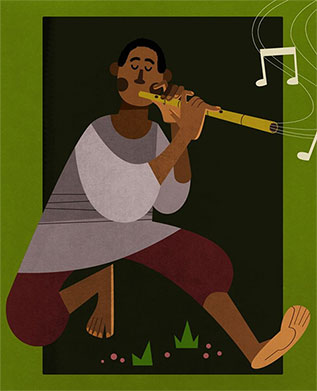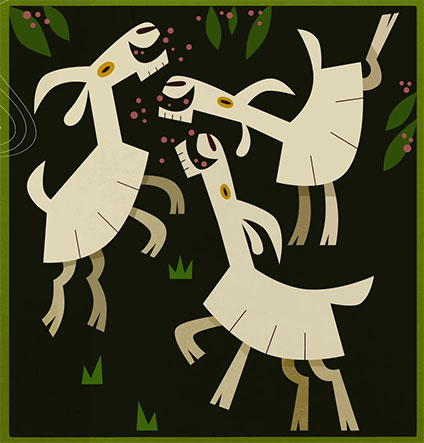Get to know the legend of Khalid the shepperd, coffee's founding myth

The coffee world is full of symbols, with origins lost in the depths of time and many interesting stories hidden behind them.
It's not uncommon for many cafes, but many companies involved in roasting or trading coffee, to have names or logos associated with a ... goat! Names like "dancing goat", "crazy goat" "wandering goat" and sketches with kids drinking or chewing coffee and dancing are very common in both Europe and America.
Although today, many may not realize the use of the goat as a symbol of coffee, the truth is that behind this nice ruminant lies one of, we might say, "founding myths" of coffee: the legend of Khalid the shepherd !
 The origins of Coffee
The origins of Coffee
It is a fact that the coffee plant is endemic to the territories of Ethiopia, Eritrea and Sudan - all coffeehouses that are currently scattered today in the dozens of countries belonging to the "coffee belt" between the Tropics of Cancer and Capricorn, West African coffees are like pre-pre-great-grandparents. What is not entirely clear is when coffee began to be consumed by humans.
Although the first recorded appearance of coffee as a beverage concerns Sufi monk communities in the Arabian Peninsula near present-day Yemen in the 15th century, it is certain that Ethiopian nomads knew the properties of coffee, consuming it in a dish that brings to mind today's energy bars: mixing the fat with animal fat and making small edible balls.
Certainly, the discovery of coffee was made by Ethiopian rural - livestock communities - but how do goats relate to it?
 The curious sepherd and the dancing goats
The curious sepherd and the dancing goats
Legend has it that Khalid the shepherd (or, in other words, the Kaldi) used to graze herds in Ethiopian meadows, until he noticed his goats changing behavior when they were chewing on the red fruit of the coffee tree - becoming more energetic and more playful. Impressed, Khalid himself tasted the fruit himself, and went for a stroke to the wisest man he knew: a Sufi monk in a nearby monastery.
As the Islamic religion bans psychotropic substances, the monk threw Khalid's fruit into the fire, but the shepherd picked them up, seeing that only the seeds were left, blackened. Soon enough, he threw them in a jar of water to cool them down, but seeing the water change color and smell great, he decided to try it - and it was coffee!
All of the above is supposed to have happened around the 8th century AD, but the legend is first recorded in the 16th century by Antoine Faustus Nairon, a Syrian Christian scholar who was one of the first writers to deal with coffee in his writings.
Like all myths, the myth of Khalid and his crazy goats hides truths inside: the lands where coffee first appeared, the role Muslims played in spreading it, the transformation of the fruit into roasted beans and drink. Of course, it is not at all unlikely that the breeders observed strange behavior in their goats after eating the fruit of the coffee tree, so the experiences of Ethiopian shepherds were personalized to Khalid and his crazy goats.
The next time you see a goat, two horns, a shepherd or something in a coffee shop or a coffee maker, you will know that this simple sketch hides an oral tradition that goes back more than 1,000 years!










